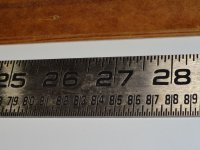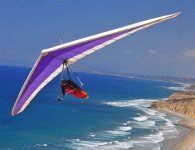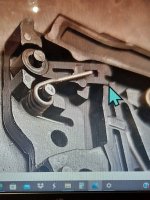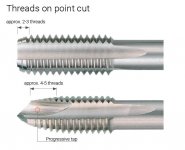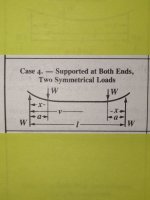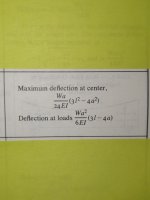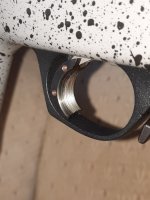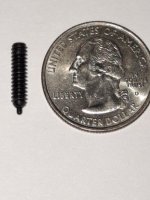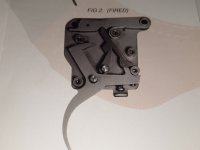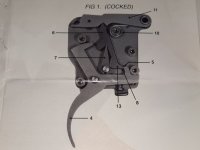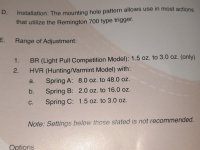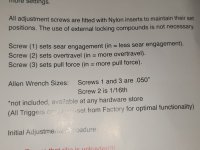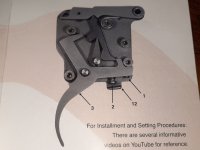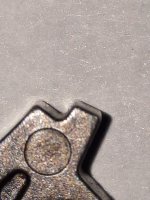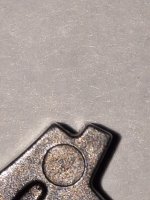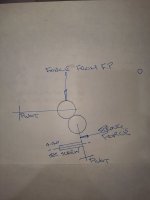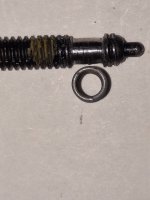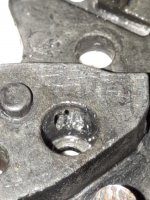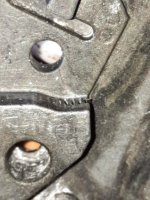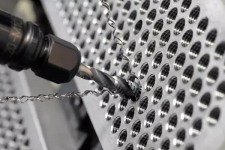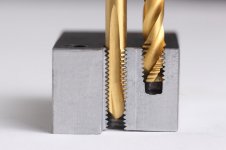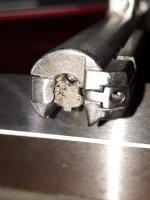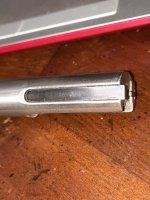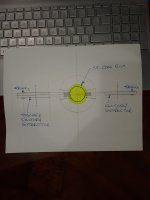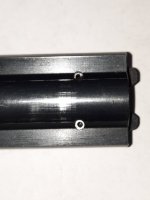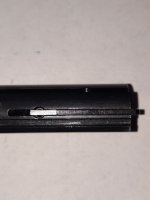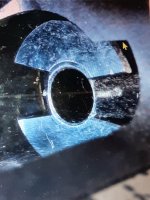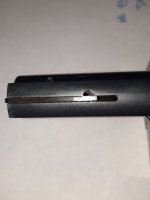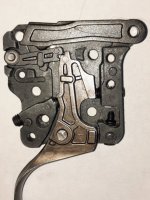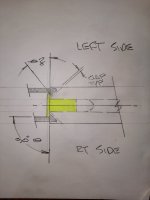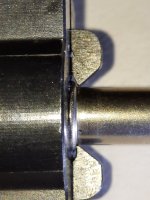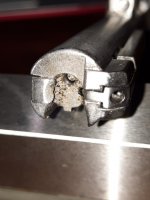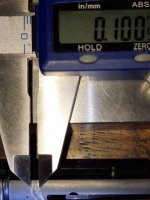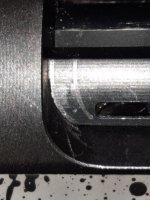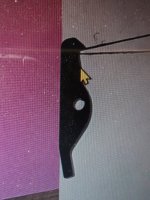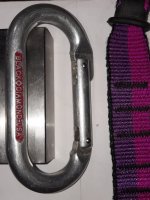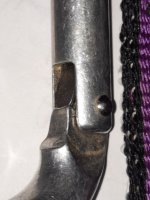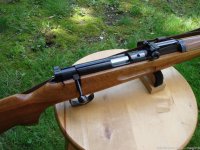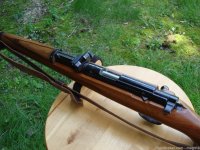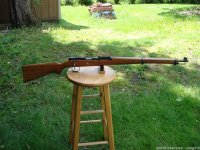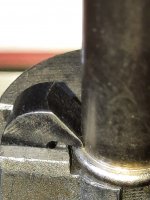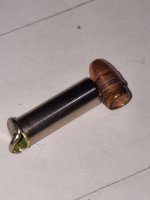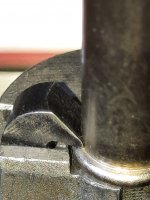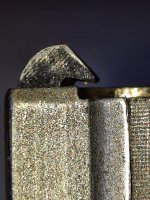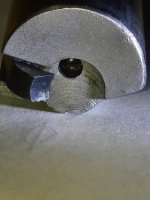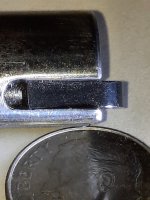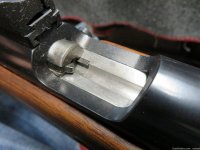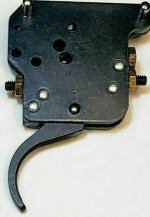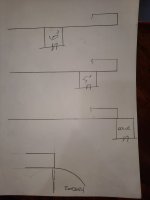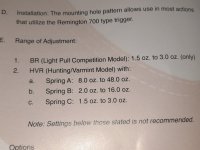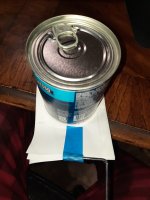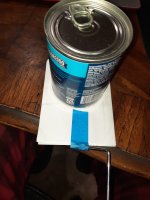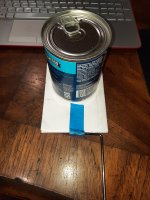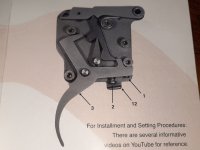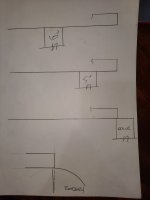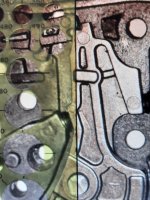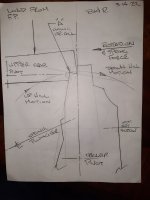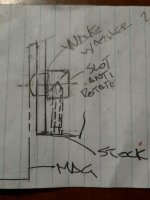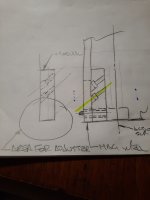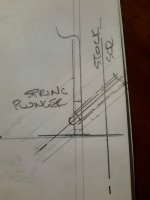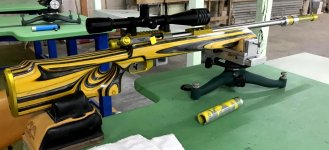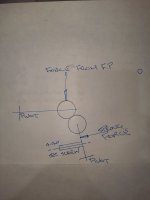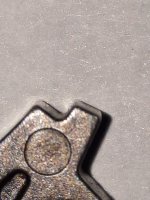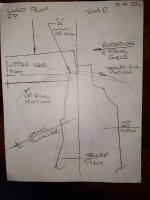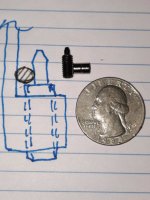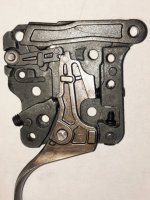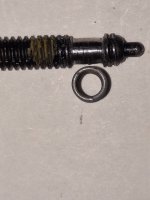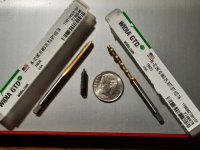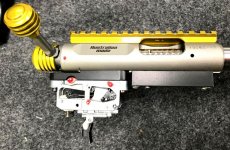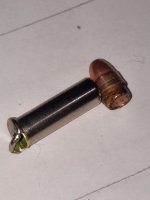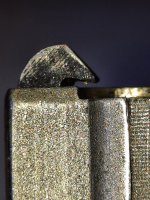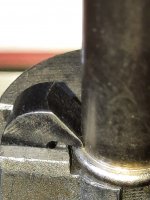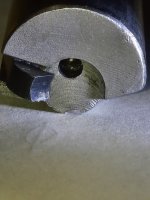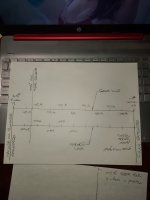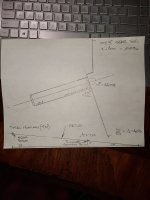Hello Magpie,
I can only tell you If you line me up with a 101A crossover in .22 LR.... It needs to have the laminate stock too. ;-)
Id love to hang an Anschutz trigger off one like the photo below. I think he lives in Australia too.
She is a pretty gun and I don't have a rear lug gun in my collection yet.
I'm happy to help in any way That I can, McMaster Carr is an
Industrial hardware supplier. I would start my search
with those words in the title for stuff near you. I will poke around later today for you ....
As for the spring plunger, the heavier spring plunger counter acts more trigger spring force. If you want a heavier trigger
you need a lighter plunger. OR, see the better
M4 option below.
Fearless.... you almost got me.... You mentioned an
#8-32, you don't want that yet.
My 11 ounce trigger was achieved with the #6-32 plunger #8495A11 ... 1.5pounds / 4.5 pounds. ( With nylon locker ) $4.56 USD.
It also required the removal of the M4 spring adjuster in the front lower corner of the trigger housing. Photo #5
The next lighter long nose spring plunger would be #6-32 #8495A12.... 1 pound / 1.6 pounds. That would give you a heavier trigger.
But I don't think it would go low enough for you ??
The number in blue is a shot in the dark but 57.4 oz. is likely it's low end
trigger weight with the #8495A12 installed. The blue value is a very rough guess!! See rough examples in next paragraphs.
With the A11 installed I get an 11 ounce trigger pull. That plunger has a spring force of 4.5 pounds or 72 ounces.
If I add the 11 ounces that is required to pull the trigger I end up with 83 ounces total. Lets call the Factory force 83 oz.
The counter balance plunger is 72 oz. That means I need 11 ounces from my finger to fire the rifle.
The A12 plunger has a force of 25.6 ounces. If I subtract that from the 83 oz. factory spring force, I end up with a trigger
pull of 57.4 oz.
The above is a quick story that neglects a lot of detail and is only to convey an idea. The numbers are used to help people follow
the train of thought. I wish I would have tried the lighter plunger so that I could give you real numbers.....
you should get the #6-32 plunger with locker # 8495A11 ( 1.5-45 pounds ) I know, that is lighter than you want .
That's OK ..... we can fix it !!
That will provide you with two things:
It will incorporate an adjustable sear feature. Advance till FP release's and then out 110*. Approx. .023 sear engagement.
Your trigger will have a pull weight of 11 ounces. That value is not variable with the position of the set screw.
The factory has a spring adjuster located in the front lower corner shown in photo #5. It's the special black M4 screw.
It's my belief that it retains the free end of the torsion spring with the housing as shown in the sketch.
That M4 screw can be used to overcome some of the 4.5 pound plunger force. It only needs to be totally backed off of the
spring if you desire an 11 ounce trigger pull. It can stay in the housing to keep it from getting lost.
In short, you will drill and tap for the #6-32 plunger and then install. Then set your desired sear engagement.
Then advance the front M4 screw to increase the trigger weight to your desired pull. Simple??
The #8-32 or M4 should be a back up plan incase you were to screw up the #6 or you wanted to experiment with the lightest
possible trigger for the B14R . The primary reason being that the #8 nicks the safety ball detent spring.
Photo #4 shows a spring plunger with the threads removed to clear the spring.
The #8 has a 7.3 spring force and is
therefor too heavy. If used, the M4 screw must be used keep the trigger force balanced. Slightly bias in the triggers favor....
In any case, the factory spring must always
over power the spring plunger to some degree or the trigger wont reset.
If the #8 or M4 were to be used, the same front M4 set screw would be used to offset some of the 116.8 oz. plunger force.
The trigger, in simple terms is basically a teeter totter. Sure...the pieces aren't straight lines but things need to be in
equilibrium.
I have reposted the last two sketches for you. The trigger and upper sear are more for detailed information. The drawing is
exaggerated to demonstrate how the parts interact. I feel that "Rounded Sears" is important enough to warrant
explain it again. If you zoom up on B14R trigger blade, you will see the rounded edges of the sear. They are not sharp and crisp.
Look at the sketch labeled "Rounded Sears" you will see what I believe is allowing some people to get a lower trigger weight
with the addition of only a set screw. There is a spring force on the lower circle ( sear ). There is a downward force on the upper
sear from the firing pin assembly. It has line contact with the upper circle ( sear )
In the prior post about friction, #138, we know that friction is independent of surface area contact. These two sears have very little
surface contact but but all of the forces are focused on the line contact that they share. Surface area goes down / unit pressure goes up.
I think that the only thing keeping the sub 16 ounce, #4-40 set screw guns from going off is friction and not sear overlap.
My best estimate from zooming up on the sears by a factor of 20 is that the radii are about .005"
1"/ 32 tpi. = .03125" pitch / 360* = .000086806 per * of rotation x 2.5 trigger ratio =
.000217014". Sear movement for 1*degree of rotation.
Keep in mind that at 110* backed off from the fired position, you will be contacting on sear flats like you should be.
110* X .000217014" = .02387" approximate sear overlap.
There is a window to view your sear in your trigger as well.
Magpie Bird,
""thought to rank among the world's
most intelligent creatures, and is one of the few non-mammal species able to recognize itself in a
mirror test.""

